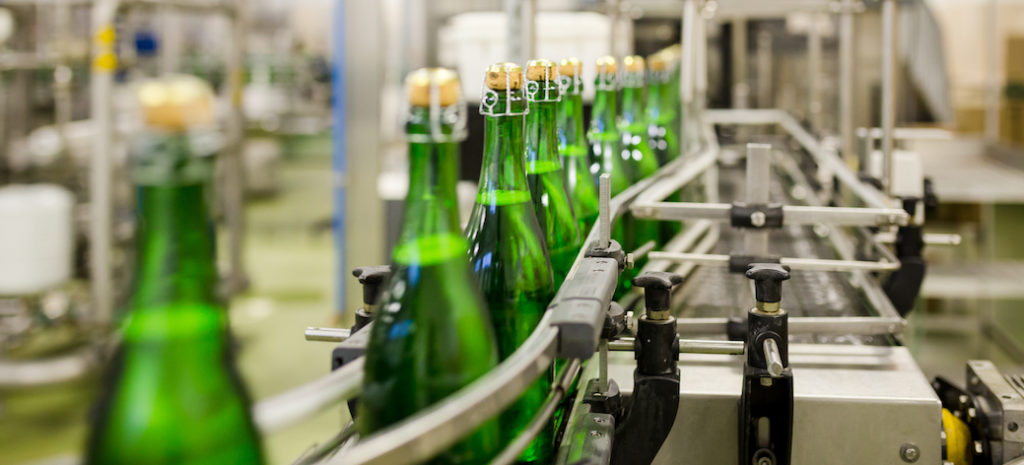
Imprecise or inconsistent dimensions in batches of cork stoppers are the most common problems when it comes to bottling sparkling wines. Closing a bottle of sparkling wine with the wrong cork can cause serious flaws in the bottling process. As a result, some batches or deliveries may be delayed, or it could even cause breakage that can spoil the entire product, with the economic loss that this entails for the producer.
Selecting the best stopper, with the right dimensions according to the CO2 pressure and bottle you are working with, is key to guaranteeing quality bottling. For this reason, in this article we will look at some of the typical problems that occur when using the wrong sizes or low-quality irregular batches of stoppers, and we will give you the most common universal dimensions, as a guide for good bottling.
The importance of a good stopper
There are many factors to consider throughout the wine production process. Each and every decision made will have a direct impact on the quality of the end product.
Producing sparkling wines is so complex and offers so many possibilities that it has been researched over the course of history and is now a sophisticated and meticulous undertaking. In fact, winemakers dedicate all their efforts to looking after the details that are part of their end product. One such detail that makes the difference between a high quality product and a medium or low quality one is the choice of stopper for wine bottles. This is even more so when it comes to sparkling wines, since they need to maintain an adequate pressure to preserve the product in its optimum state.
The best sparkling wine stoppers are made with natural cork discs. This is a very suitable material for preserving wine, thanks to its characteristics:
- Cork is lightweight, elastic, and compressible.
- It is impermeable to the transfer of liquids and gases.
- It adheres perfectly to the glass of the bottles for an optimal seal.
- It degrades very slowly allowing wine to be stored safely for long periods, as is the case with bottles with cork stoppers.
- Stoppers with natural cork discs have shape memory, an intrinsic characteristic of cork that helps it recover its shape after being uncorked from the bottle.
Common problems with stoppers in the bottling process
When choosing a good stopper, it is not only the quality of the material that must be taken into account; another vitally important aspect is the size of the stopper. In this sense, the stopper must perfectly seal the bottle, and whether it succeeds or not is a matter of mere millimeters.
With sparkling wines in particular, the bottling and sealing of bottles poses more challenges than still wines, since the stopper must withstand high pressure while maintaining the right consistency for proper insertion and extraction.
If mistakes are made with the dimensions of the stopper we choose, the bottling process could become complicated and even impossible, causing serious economic losses and bottlenecks (as it were) in the production line of sparkling wines.
Therefore, it is crucial to pay attention to the diameter of the stopper, which must have a direct correlation with the interior measurement of the neck of the bottle. The objectives in corking a sparkling wine are the following:
- Achieving an airtight seal that keeps liquids and gases in their optimum state. The different pressure limits must be taken into account, which, in the case of sparkling wines, is around 6 bar.
- Facilitating stopper insertion. Bottling, whether by hand or machine, needs to be an easy process to avoid forcing the bottle.
- Ensuring a smooth opening. Just as the stopper must provide an airtight seal for the bottle, it is also necessary to ensure that the end consumer can uncork it with a suitable level of pressure.
Another problem that winemakers may face in relation to stoppers is the arrival of a batch of irregular stoppers, i.e., with small variations due to imprecise manufacturing. This can result in defective batches of bottles, since the stopper must fit so precisely that any discrepancy could cause poor bottling.
Universal dimensions for stoppers
Cork stoppers must be selected with a consideration of the bottle neck. For sparkling wines, stoppers with a diameter of around 30 mm are the most common choice. The most common measurement range used is from 29.5 mm to 31 mm. We must also take into account the fact that the maximum reduction of the bottling machine has to be around 50% of the stopper diameter, so that once inside the bottle it exerts pressure against the neck, thus ensuring the airtight seal. For example, a 30.5 mm stopper is compressed to 15 mm.
Another aspect to consider is the difference between the diameter of the inside of the bottle neck and the diameter of the stopper. The stopper, once compressed in the bottling machine, must have a diameter of between 1.5 and 2 mm less than the diameter of the inside of the bottle neck. In addition, we need to take care not to over-compress the stopper, as this could cause the structure to break, resulting in the loss of its properties.
Key points to remember
Selecting a good cork stopper supplier that guarantees maximum technical quality is crucial for a uniform and high quality end product. The molding and the finish of the stopper (reinforced with cork discs), as well as the level of uniformity of batches of stoppers are important aspects to consider.
At TESA, we advise our customers on the ideal dimensions for each type of bottle and sparkling wine. This means our stoppers are perfectly suited to our customers’ needs, which is why we can guarantee the quality of the end product.
If you would like more information, please get in touch with us. We would be delighted to help you.
